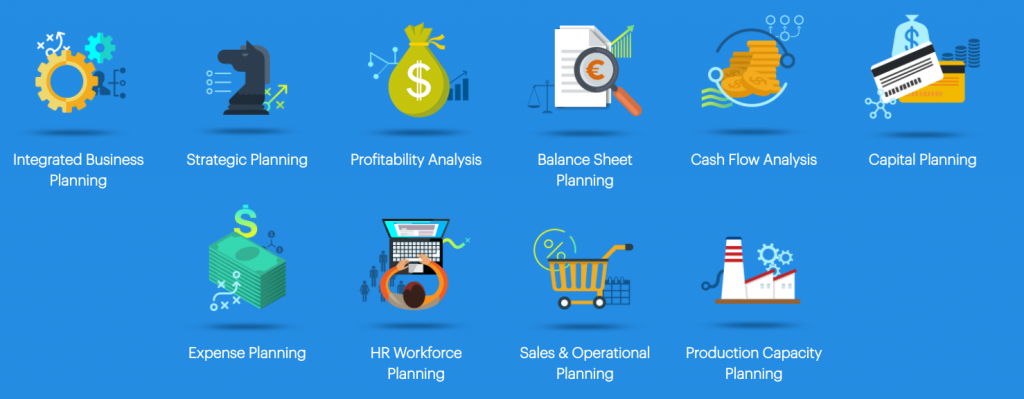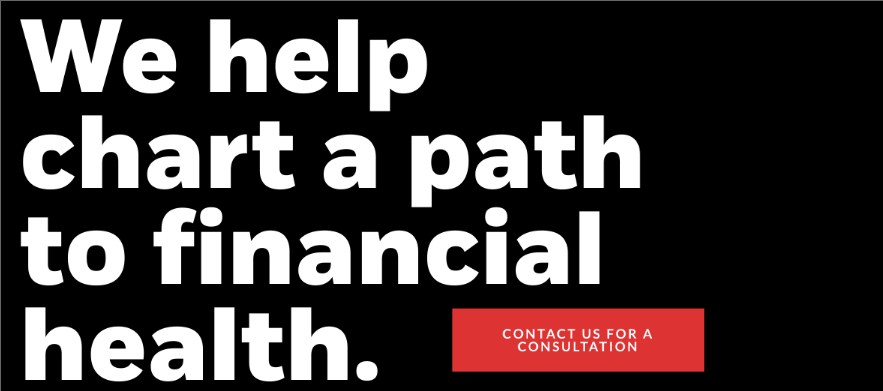Strategies for Improving the Budget Planning Process for Your Business
 Budgeting for both small and large corporations is a necessary financial duty. Investopedia stated in an article about it that “estimating and matching expenses to revenue (real or anticipated) is crucial because it helps small business owners figure out if they have enough cash flow to fund operations, grow the business, and generate income for themselves.” Because without having an allocated budget or a plan, a company runs the risk of spending more money than it is taking in, or conversely, not spending enough money to expand the business and compete in the marketplace. You know it’s important to weigh the costs and benefits before committing resources.
Budgeting for both small and large corporations is a necessary financial duty. Investopedia stated in an article about it that “estimating and matching expenses to revenue (real or anticipated) is crucial because it helps small business owners figure out if they have enough cash flow to fund operations, grow the business, and generate income for themselves.” Because without having an allocated budget or a plan, a company runs the risk of spending more money than it is taking in, or conversely, not spending enough money to expand the business and compete in the marketplace. You know it’s important to weigh the costs and benefits before committing resources.
A company’s financial budget is a plan to:
- control your finances
- ensure you can continue to fund your current commitments
- enable you to make confident financial decisions and meet your objectives
- ensure you have enough money for your future projects
We are getting to the 4th quarter of 2019, when financial leaders of companies will start to analyze and measure this past year’s performance, as well as forecasting for the next year’s budget and goals aligning with a strategic plan. Everyone has been through this process. Here is the issue though, oftentimes the budgeting procedure can make some organizations feel overwhelmed with the administrative task of it, full of complicated processes while also dealing with operational inefficiencies. I recommend for businesses, to take a step back a bit and take a look at your company’s budget process, which can be helpful sometimes to understand where friction or issues may be occurring. Frank Graham, a CFO for Dixon Hughes Goodman LLP recently wrote an interesting article on budgeting process tips. According to an HBR article titled “stop budgeting, start improving” stated that some organizations have replaced the budget with a quarterly forecasting and planning process.” In large companies, budget planning can be broken into many facets such as; capital planning, profitability analysis, cash flow analysis, expense planning, balance sheet planning, HR workforce planning, sales and operational planning and production capacity planning, or they can be integrated together. The methodology may vary slightly for different businesses.
You do not always need to overhaul or scrap everything when it comes to Improving your business budgeting process, instead, some minor tweaks can lead to enhanced efficiencies and more value. So let’s get into some helpful tips and recommendations that may assist you while you are working to optimize your company’s budget procedures, as well as improved operational performance for the organization.
Set Up a Project Charter for your Businesses Budget Process
A project charter for a company’s budget defines the issue to be resolved, the scope and the goals of the undertaking, and the roles and responsibilities of the parties involved in the process. Frank Graham, a CFO for Dixon Hughes Goodman LLP stated “by establishing a charter, your organization can clearly establish an overarching goal of the budgeting process, guiding the decisions of what will be included in the final process and how the process will create value.” Let’s look at an example of how this would work.
Project Charter
The finance department should create a budget process that will synergize company business planning and strategic execution with a budget process workflow to reach a conservative and realistic budget plan.
Dixon Hughes Goodman LLP suggests the budget process could include:
- Clearly-articulated calendar
- Defined calendar with steadfast deadlines
- Timely integration of business planning into the budget process workflow
- Timely integration of prescriptive metric goals
- Defined critical tasks? Get rid of inadequate value steps
- Short-term technology enhancements
- Identify and consider company investments
The above processes will create additional value by:
- providing specific accountability of each of our team members
- efficiently utilizing and respecting the time of our team
- communicating a consistent and clear plan to each of the Leaders
- focusing on all 5 elements of company strategy
When a company is analyzing its process for creating their annual budget, having a project charter can serve a basis for necessary refinements or changes. And as you brainstorm, and discuss, and hypothetically test your budget process, Mr. Graham suggests asking a few questions such as “Is this in alignment with our charter? Does it help us to create additional value?”
Budgeting is a Team Effort
A company’s planning and budgeting duties should be undertaken as a team-effort project including employees from multiple departments such as finance, operations, HR and the executive c-suite leadership. Now, of course, depending on how large or small your organization is (does your business have leadership in multiple regions or office locations) then it might useful to receive input from those regional leaders about what is important to them in the budget process and filter in some those needs into the project charter.
Creating a collaborative environment will enhance the accountability of all the team members, ensuring that all department interests in the budget are represented during the important decision making. Frank Graham suggests making a “communication plan that addresses all pertinent departments, levels, leaders and decision-makers in your organization as you prepare to walk through your budget process.” It is also a good idea to encourage your team to give feedback about how the budget project charter could impact their department or business unit goals and interests. This way you can establish an open dialogue to minimize any conflicts of interest or misunderstandings when making vital decisions about your annual budget. Having each department collaborating together can better align the project charter and also set more realistic budget goals.
Jason Green wrote an article in HBR titled “Four ways to build better budgets” where he discusses “how build the case for each business unit starting from market demand and working back to internal cost, capacity and capability measures.” Meaning when meeting with
different business departments and when you are thinking about where to allocate resources and budgets, companies should think about and ask the question: “Is this department going to drive growth, revenue, sales or profitability in the next quarter or year?” Jason says by putting in the demand context, it gives a starting point needed to ensure that each business unit has realistic projections for ongoing growth and profitability. He also said that “these analyses should be completed prior to the actual budgeting and planning discussions and should be provided as pre-work in advance of the actual sessions.”
Break Down your Current Budgeting Process
Examining and mapping out your current budget process maybe a time-consuming endeavor, however, when you review your current process and compare it to your project charter, it will help you pinpoint:
- Critical pain points in the process.
- Inefficiencies (i.e. areas where you are spending considerable time but not gaining value).
- Disconnects between your organization’s business planning and strategy.
Merge your Project Charter and your Company’s Annual Business Goals Early in the Process
It can be beneficial to incorporate your project charter early on into your budget process.
When you do this you can start to align the budget to the company’s annual business goals and underlying strategy and start to make important decisions earlier.
Frank Graham suggests that his company address the most important aspects of their business first, saying “we aligned our leadership on these aspects and reduced the time invested in less critical areas.”
Shorten the Time Frames
While the process of budgeting is a complex process for many companies, there are opportunities to streamline the process for efficiency and develop the final budget in a shorter time frame. One way to streamline the process for creating the budget should include a “defined calendar with steadfast deadlines, timely integration of business planning into the budget process workflow, and timely integration of prescriptive metric goals you want to achieve.” This can help your organization to better identify and define critical tasks and cut out unnecessary
Doing so may help you better identify and define critical tasks and work to eliminate inadequate value steps in the process.
Crucial Decisions and Process Alignment
Once you have analyzed your budget procedures and found areas that could be enhanced or changed to your budgeting process, Frank Graham suggests a few strategies of steps you can take to put it action:
- Summarize key changes to share with your leadership and process owners.
- Discuss impacts of the key changes on the organization.
- Identify key decisions for your leadership team.
- Ask for alignment between leadership team and process owners.
- Communicate with and train your process owners.
Cloud Software Technology Enhancements

If your corporation is growing and expanding, then you might want to consider ditching Excel spreadsheets to complete your budgeting for the next fiscal year. Cloud-based software technology platforms are being used to improve processes in many different areas of finance, which can help with functions beyond a manually-manipulated spreadsheet. This helps to complete budgets faster with minimal mistakes. Frank Graham discussed how his organization uses enterprise performance management platforms to improve management of its business by connecting financial and operational metrics to provide comprehension and understanding to push strategies and plans for the future, thus optimizing overall performance within the organization, especially when it comes to budgeting improvements. Regardless of your planning and budgeting methodology, enterprise budgeting software can help to streamline and automate many types of planning into a single solution, while modernizing and simplifying the process, and facilitating collaboration across financial and operational planners.
What are the benefits of Project charter for budget process?
Reexamining and tweaking your budgeting process can help you achieve more than simply making it seem easier or less frustrating. Firstly,making a better process will translate into greater accountability from each member of your team. Secondly, having a more streamlined process and a shortened timeline gives a better use and value of the time of each person involved.
Remember, having a better process at the beginning of the planning cycle will help make analysis at the end of the fiscal year even easier, when evaluations can be made about goals and objectives, and teams can make better predictions for the future. Below I want to recap what and how a project charter can be used improve the company’s budget process.
Functions of a Project Charter
- To provide brief details about a project. This includes its purpose and scope. It also clarifies what is expected of the implementing team.
- It serves to keep the executing team focused on the critical process that’s being improved.
- It instills a sense of commitment and ownership of the project by the team.
- It gives stakeholders of the organization a big picture of what is taking place.
- It seeks to forestall any side-shows and activities that are not part of the improvement process
Conclusion
Recently Bloomberg published an article titled “Oracle Is No Longer Dreaming of Cloud Dominance” where the contributor Nico Grant discussed how a few years ago Oracle’s founder Larry Elison had ambitions of competing with Amazon, Microsoft and Google for cloud computing storage provider market share. Despite the talent and backing, Oracle’s cloud infrastructure unit failed to win business, and after five years, Oracle’s management decided the cloud division was too expensive for the little progress it had made. So, Oracle has since changed their goals and shifted resource budgets to other units such as database markets and business applications where there are more revenue opportunities. Why is this important? Most companies set strategic goals such as cutting operation costs or reducing inventories and allocating more resources to units or departments that will be top drivers of profits and growth going forward. Improving the budgeting process, and collaborating with all of the participants (human resources, finance, marketing, sales and IT, etc.) and letting them understand what resources were allocated to each business unit and why in the previous year. The purpose is to drive understanding and alignment as to why resources were allocated as they were, what performance expectations are going forward, and how changes in performance can change resource allocations in the future.










